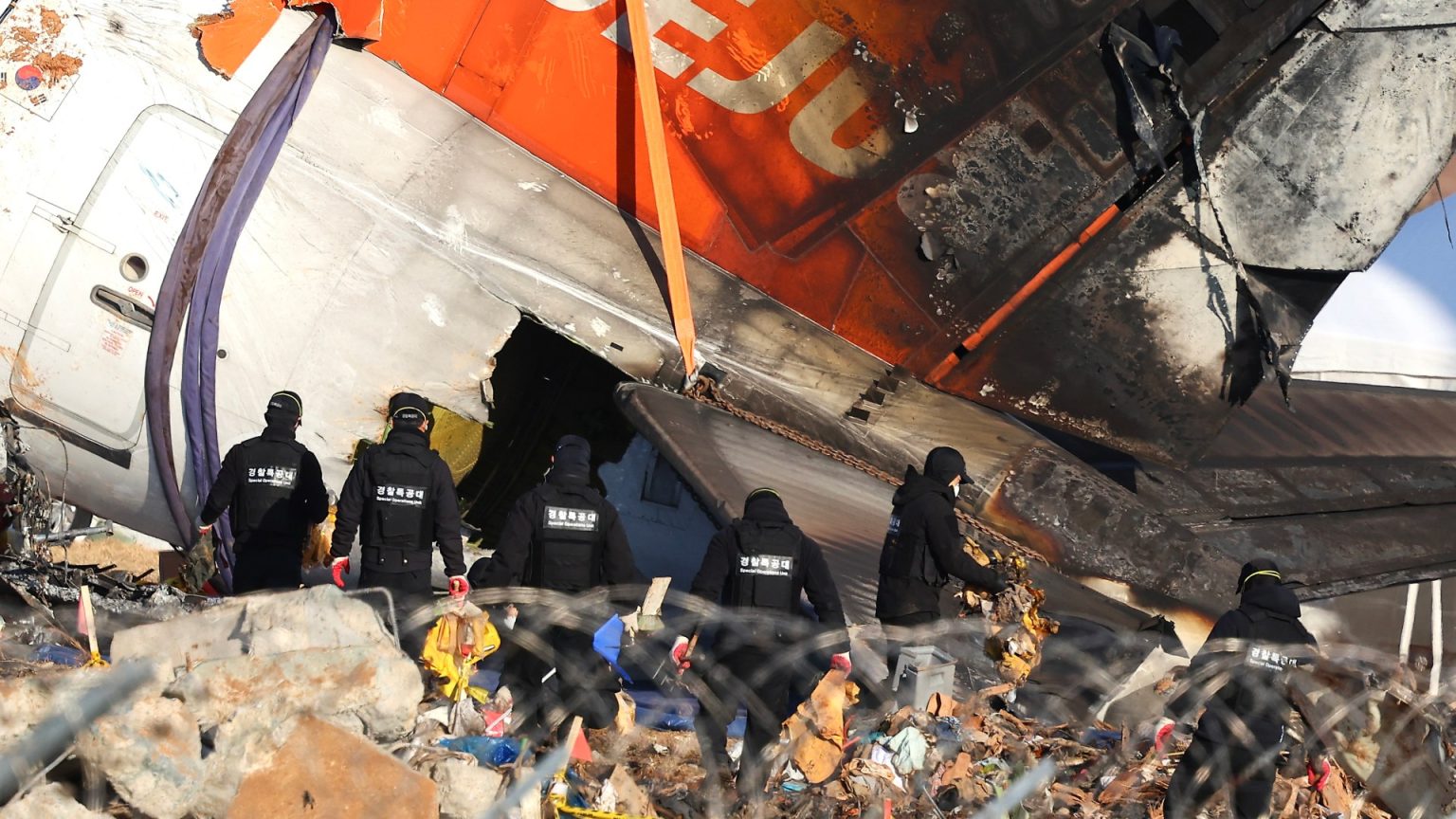The Jeju Air crash in South Korea, a tragedy that claimed 179 lives, may have resulted from a chain reaction of failures initiated by a bird strike. Aviation expert Julian Bray suggests the bird strike, potentially involving multiple birds, could have caused more than just engine damage. Debris from the impact might have sliced through crucial systems, including fuel lines and hydraulics, ultimately leading to a complete power outage. This theory aligns with the puzzling failure of the black boxes, which ceased recording four minutes before the crash. Older black box models rely on the aircraft’s power supply and would be disabled by a total power loss. This critical four-minute gap in data significantly hampers investigators’ ability to understand the final moments of the flight.
The bird strike and ensuing power failure may explain why the landing gear was not deployed. Without hydraulic power, the pilot would have had limited control over the aircraft. Witnesses described the plane appearing to land halfway down the runway, but Bray posits an “air bubble” effect between the fuselage and the runway might have prevented a smooth belly landing. This cushion of air could have kept the plane aloft momentarily, before suddenly dissipating and allowing the aircraft to slam onto the runway at high speed, with no functioning braking system. The plane then collided with a locator antenna array, typically a collapsible metal structure, but in this case, mounted on a thick concrete slab known as a berm. This seemingly minor infrastructural detail transformed the crash into a catastrophic fireball.
The concrete slab, against regulations according to Bray, elevated the front of the plane upon impact, causing the devastating explosion. Had the antenna been mounted on a standard collapsible structure, the outcome might have been drastically different, potentially saving lives. The presence of this non-compliant concrete slab is now the subject of scrutiny, with calls for a full investigation into its installation and a wider review of airport safety standards across South Korea. This incident exposes a critical vulnerability in airport infrastructure and underscores the importance of strict adherence to safety regulations.
Remarkably, two crew members seated in jump seats at the back of the aircraft survived the crash. Their survival is attributed in part to the swift and effective response of emergency services, with over 1,500 personnel and 35 fire engines deployed to the scene. The tail section of the plane remained largely intact, providing a degree of protection for those seated at the rear. These survivors are now crucial witnesses, possessing valuable insights into the events leading up to the crash. Their firsthand accounts, coupled with their understanding of standard operating procedures, will significantly assist investigators in piecing together the puzzle.
With the black boxes sent to the US for analysis, investigators hope to salvage some data, despite the power outage. Simultaneously, a meticulous forensic investigation is underway. Every fragment of the wreckage will be collected and reassembled, allowing experts to reconstruct the plane and retrace the sequence of events. This process, akin to working a jigsaw puzzle backwards, is crucial in the absence of complete black box data. Investigators will also explore whether all procedures were followed and consider the possibility of sabotage, although no evidence of foul play has emerged. Flight simulations will be used to recreate the final moments, using data gathered from the wreckage, survivor testimonies, satellite information, and other sources.
This investigation, expected to take several months, emphasizes the importance of multiple layers of safety systems and procedures in aviation. The Jeju Air crash serves as a stark reminder of the potential consequences of overlooking seemingly minor details, such as the installation of a non-compliant concrete slab. The ongoing investigation, aided by international collaboration and expert analysis, aims to uncover the truth behind this tragedy and prevent similar incidents from occurring in the future. The focus now shifts to understanding the cascading failures that led to this devastating loss of life and implementing necessary changes to enhance aviation safety.




